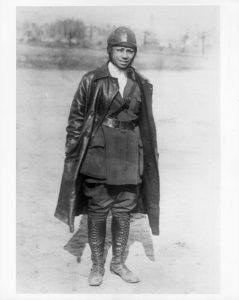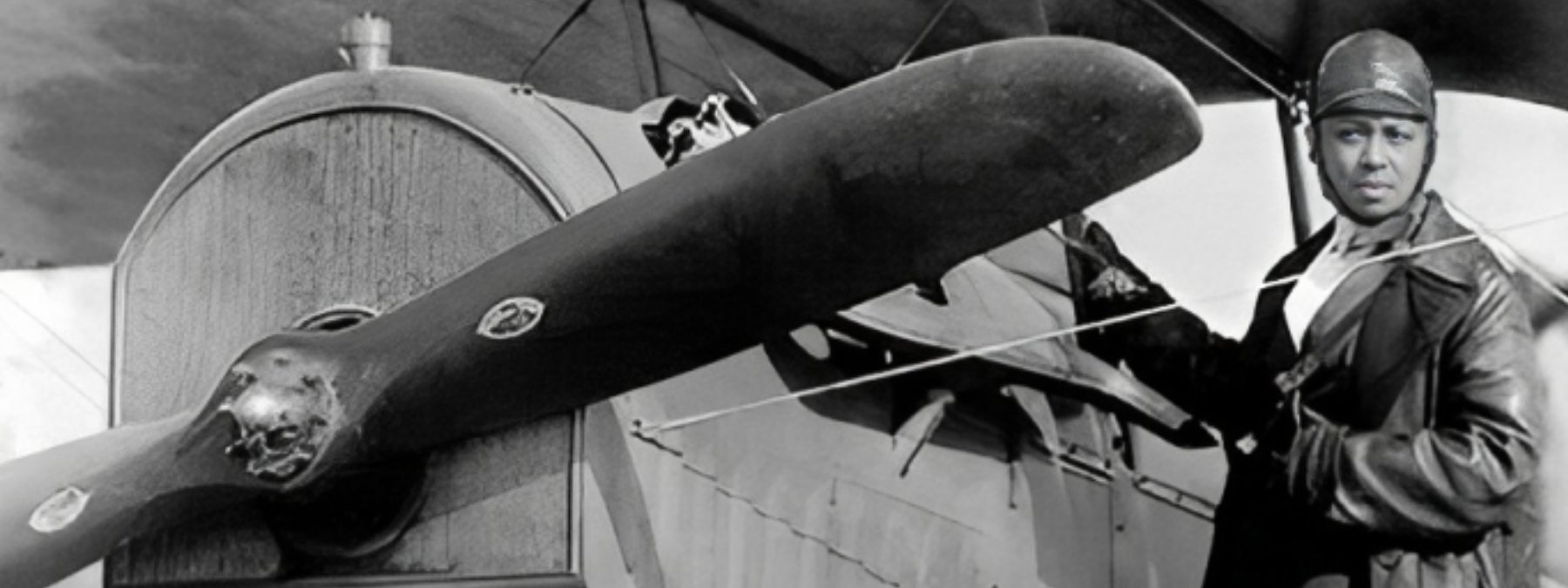Bessie Coleman, January 26, 1892-April 30, 1926

(1892-1926)
Young Bessie Coleman, daughter of sharecropper parents of African and Cherokee descent, found distractions from her toil in the Texas cottonfields.
Transfixed by birds soaring in the air, she thought, they commanded the only place where a soul could be truly free.
Coleman landed in Chicago in 1915, with few possessions she carried an unquenchable affirmation: “I must amount to something.”
In an era of relentless racial violence, Coleman was buoyed by stories of the 369th Infantry Regiment, the all-Black WW1 fighting force revered for battles in France.
Like hundreds of Black artisans, Coleman would find France a welcoming magnet for opportunity unattainable in the United States. Supported by Chicago Defender publisher Robert Abbott, she headed to Paris, attended aviation school and in 1921 became the first Black or Native woman to receive an international pilot’s license.
“The air is the only place free from prejudices,” Coleman remarked. “I knew the race needed to be represented…so I thought it my duty to risk my life to learn aviation.”
She returned to the states, defying the odds and winning the nickname “Brave Bess.” An air show phenomenon, she captivated and thrilled with barnstorming theatrics.
Coleman also used her celebrity for racial justice, refusing to perform in air shows that barred Black spectators.
She purchased her own plane in 1923. Despite injuries, risks and dangers, the daredevil never stopped flying until a fatal crash at 34.
Bessie Coleman’s legacy stretched across gender and generations. While she did not live to witness it, her friend and fellow aviator William Powell would open the Bessie Coleman Aero Club to train aspiring flyers.
Together Coleman and Powell, a WWI Army Lieutenant, cleared the path for the famed Tuskegee Airmen of World War II.
“Because of Bessie Coleman,” stated Powell, “we have overcome that which was worse than racial barriers. We have overcome the barriers within ourselves and dared to dream.”
Decades later, NASA astronaut Mae Jemison, the first Black woman to travel into space, carried a picture of Coleman with her on the historic orbit.
“I point to Bessie Coleman and say here is a woman who exemplifies and serves as a model for all humanity,” noted Jemison.
Learn more about Bessie Coleman in the video below



